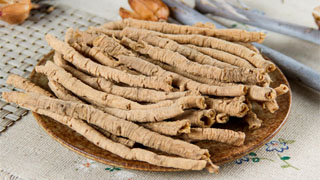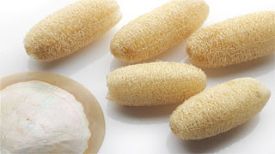
1. Alias
Xiaoye Yuanzhi, Xiaocao, Cuoluo, Spiny, Bitter Yuanzhi, Little Chicken Eye.
2. Plant morphology
Perennial herb, 20-40 cm tall. The root is cylindrical and long. Leaves alternate, linear or narrowly linear, nearly sessile. Terminal inflorescence; Flowers pale blue purple; Sepals 5, outer ring 3 small, inner ring 2 petal shaped; Petals 3, one larger, with filamentous appendages at the tip; There are 8 stamens, and the base of the filaments is fused into a sheath. The capsule is flat, rounded heart-shaped, without eyelashes, and has narrow wings at the edges. The flowering period is from May to July, and the fruiting period is from July to August.
3. Origin distribution
Born on mountain slopes and dry sandy grasslands. Mainly produced in Shanxi, Shaanxi, Jilin, Henan and other places.
4. Harvesting and processing
Excavate in spring and autumn, remove roots and sediment, and dry in the sun.
5. Characteristics of medicinal herbs
Cylindrical, slightly curved, measuring 3-15 centimeters in length and 0.3-0.8 centimeters in diameter. The surface is gray yellow to gray brown, with dense and deeply embedded horizontal wrinkles, vertical wrinkles, and cracks. The horizontal wrinkles of the old roots are denser and deeper, slightly nodular. Hard and brittle in texture, easy to break, with brownish yellow skin and yellowish white wood on the broken surface, and the skin is prone to peeling off from the wood. Qi is weak, the taste is bitter and slightly spicy, and there is a tingling sensation when chewed.
6. Sexual Taste Returning to the Classics
Warm in nature, bitter and pungent in taste. Returning to the Heart Meridian, Kidney Meridian, and Lung Meridian.
7. Effect and Function
Soothing and enhancing intelligence, dispelling phlegm, and reducing swelling. Belonging to the subcategory of tranquilizers, it is a type of heart nourishing and calming medicine.
8. Clinical application
Take 3-9 grams and decoct in water. Used to treat insomnia, frequent dreaming, forgetfulness, palpitations, confusion, coughing up phlegm, swelling, and breast pain caused by heart kidney failure.
9. Pharmacological research
Pharmacological research results indicate that due to the presence of saponins, they can stimulate the gastric mucosa and cause mild nausea, resulting in an increase in reflexive bronchial secretions and an expectorant effect. Oral administration of the extract to animals and dogs can promote tracheal secretion. In addition, it also has antihypertensive and antibacterial effects, central sedative and anticonvulsant effects; Expectorant; step-down; Hemolysis; Contraction of uterus; Antibacterial; Anti mutation and other effects.
10. Chemical composition
Containing various triterpenoid saponins, mainly including saponins A from Polygala tenuifolia B、C、D、E、F、G, It is composed of saponins such as saponins from the slender leaves of Yuanzhi combined with different sugars, with the highest content of saponins found in the skin. In addition, it contains saponins, saponins, glycosides, glycosides, glycosides I, glycosides II, 1,6-dihydroxy.3,7-dimethoxyglycosides, α - sitosterol, stigmasterol, saponins, Siberian glycosides, alkaloids, and glycosides.
11. Usage taboos
Those with yin deficiency, excessive fire, and weak spleen and stomach should take it with caution. The dosage should not be too large to avoid nausea and vomiting.
12. Compatibility prescription
① Treatment for appendicitis: 30g Huangbai and 20g Yuanzhi. Boil soup (first boil Yuanzhi for 10 points), warm. (Jilin Traditional Chinese Medicine, 1987, (2): 16)
② Treatment of breast milk: Take Yuanzhi wine decoction and apply it to the affected area. (
④ Treating insomnia: Divide Yuanzhi meat, sour jujube kernels (stir fried), and stone lotus meat equally. Boil it in water. (Planting Apricot Fairy Formula)
⑤ Treating pediatric startle: Yuanzhi (Qu Xin) decoction. Drink it anytime. (Pope Francis)
⊙ The content of the article is for clinical reference only. Non TCM professionals are not allowed to test drugs.


